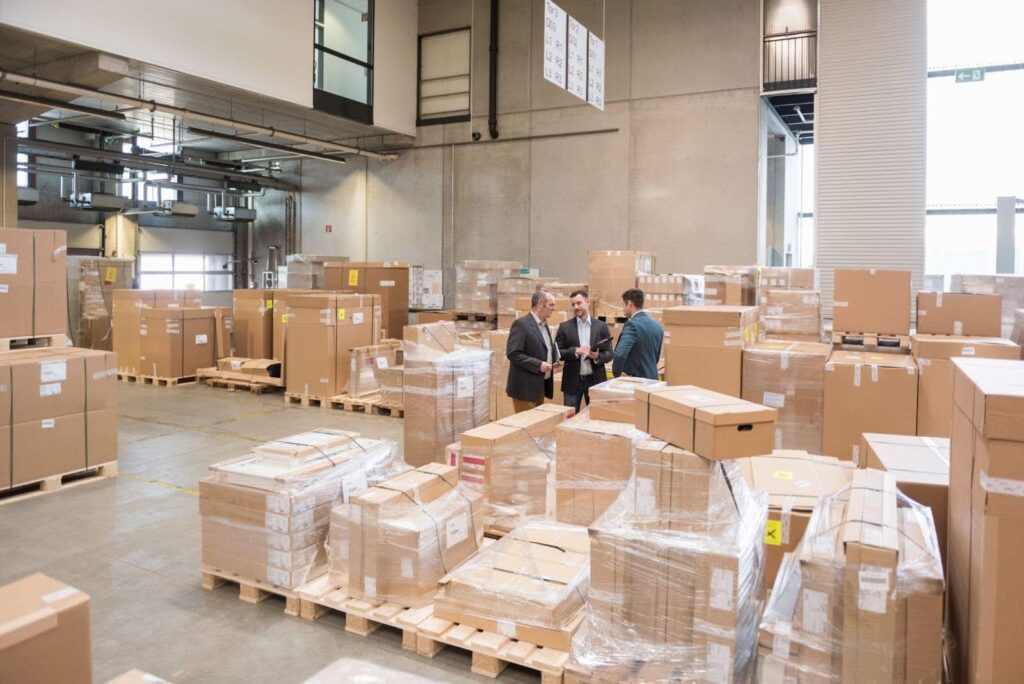If you’re planning to import into Canada, you must learn the difference between bonded warehouses and sufferance warehouses. These facilities play a vital role in facilitating Canada’s global trade, offering secure long or short-term storage solutions for goods moving in and out of the country.
For international businesses, know when to use a bonded warehouse and when to use a sufferance warehouse can make all the difference in supply chain efficiency.
In this article, we’ll explore the difference between bonded warehouses and sufferance warehouses when importing into Canada, as well as the key challenges that sufferance warehouse operators are likely to face in the coming years.
What is a Sufferance Warehouse
A sufferance warehouse is a privately-owned facility licensed and regulated by the Canada Border Services Agency (CBSA) for the short-term storage of imported goods that have not yet cleared customs. Essentially, it allows goods to be brought into Canada and stored securely while awaiting final customs estimate, processing and release. This is crucial for importers who may need to temporarily store goods while arranging necessary documentation, completing inspections, or finalizing distribution plans.
The primary purpose of a sufferance warehouse is to facilitate efficient customs clearance and streamline the import process. By providing a designated space for goods to be held under CBSA supervision, these warehouses help expedite inspections, ensure compliance with regulations, and prevent bottlenecks at ports of entry and delays in the movement of goods across the border.
Operations and Licensing Requirements
Sufferance warehouses operate under strict guidelines set by the CBSA. They must maintain detailed records of all goods entering and exiting the facility, adhere to security protocols to prevent unauthorized access, and cooperate with CBSA officers during inspections.
To obtain a license, warehouse operators must demonstrate their ability to meet these requirements and provide a secure and compliant environment for the storage of imported goods.
Types of Goods Handled
Sufferance warehouses handle a wide range of imported goods, including:
- General merchandise: Consumer goods such as clothing and footwear to furniture and household goods (e.g., kitchenware, bedding, décor).
- Electronics: Computers, smartphones, televisions, and other electronic devices.
- Textiles: Fabrics, yarns and finished textile products like clothing or carpets.
- Foodstuffs: Non-perishable food stuffs like canned goods, packaged snacks, beverages, rice and flour. Perishable foodstuffs like fresh fruits, vegetables, meat and seafood may be stored at a sufferance warehouse, but may require regular inspection or refrigerated storage.
- Machinery: Industrial machinery, agricultural equipment, medical devices, and more.
However, there are restrictions on certain goods, such as:
- Hazardous materials: Flammable liquids, explosives, toxic substances.
- Illegal goods: Narcotics, counterfeit products.
- Goods subject to specific import prohibitions: Certain firearms or weapons.
Duration of Storage in Sufferance Warehouses
The maximum time limit for storing goods in sufferance warehouses is generally 40 days from the date they are reported to the CBSA. However, there are specific exceptions for certain categories of goods:
- Perishable goods: Up to 4 days
- Prescribed substances: Up to 14 days
- Firearms, weapons, and tobacco: Up to 14 days
- Spirits: Up to 21 days
Exceeding the number of days can result in penalties, including the seizure and disposal of goods by the CBSA. It’s crucial for importers to adhere to these timeframes to avoid complications and ensure the timely clearance of their goods.
What is a Bonded Warehouse?
A bonded warehouse in Canada is a secure facility licensed by the CBSA that allows businesses to store goods without paying import duties until they are released into the Canadian market. This type of warehouse serves as a strategic tool for managing import costs, warehouse costs, and optimizing supply chain operations via:
- Duty Deferral: Bonded warehouses allow importers to defer paying duties and taxes until goods are removed from the warehouse and imported into Canada. This improves cash flow and reduces upfront import costs.
- Inventory Management: Businesses can maintain a readily available supply of goods in Canada without incurring immediate duty expenses. These goods can be kept ready for import into Canada or sent to other countries in the region, allowing for better response to market demands.
- Value-Added Activities: Unlike sufferance warehouses, bonded warehouses permit certain value-added activities, such as labeling, packaging, repackaging, and minor processing. This improves productivity as the goods are not sitting idle while in the warehouse.
Who Are the Main Users of Bonded Warehouses?
- Importers: Businesses that regularly import goods into Canada can benefit from duty deferral and efficient inventory management.
- Manufacturers: Companies that import raw materials or components for manufacturing can store them in a bonded warehouse until needed for production.
- Exporters: Businesses can store goods destined for export in a bonded warehouse, avoiding duties if the goods are re-exported.
Goods Allowed in Bonded Warehouses
Bonded warehouses in Canada can store a wide variety of goods, including:
- Duty-deferred imports: Goods imported into Canada for eventual sale or distribution.
- Unfinished products: Goods awaiting further assembly or packaging before entering the market.
- Foreign goods for export: Goods destined for export markets.
- Domestic goods for export: Canadian-made goods intended for export.
Duration of Storage in Bonded Warehouses
Goods can be stored in bonded warehouses in Canada for up to four years, with the possibility of renewal under special circumstances, based on CBSA’s guidelines. This long-term storage option provides businesses with significant flexibility in managing their inventory and supply chain operations.
Difference Between Bonded Warehouse & Sufferance Warehouse
Sufferance warehouses offer short-term storage for goods awaiting customs clearance in Canada, while bonded warehouses provide long-term storage, duty deferral, and value-added activities for both imports and exports.
| Aspect | Sufferance Warehouse | Bonded Warehouse |
| Purpose | Temporary storage for imported goods pending customs clearance | Long-term storage of both imported and domestic goods destined for export |
| Ownership | Privately owned, licensed by CBSA | Either privately owned or managed by CBSA |
| Storage Duration | Short-term (typically up to 40 days) | Long-term (for up to four years) |
| Customs Duties/Taxes Payment | Duties are deferred until goods are released | Duties are deferred while goods remain in the warehouse, payable only on goods entering the Canadian market |
| Goods Manipulation | Goods can only be stored and cannot be manipulated | Goods can undergo value-added alterations like labeling, packaging, testing, and minor assembly |
| Usage | Used by carriers and importers for temporary storage during customs clearance | Used by businesses for inventory management, consignment storage, and goods destined for re-export |
| Typical Goods Stored | Perishables, prescribed substances, firearms, and spirits | Imported and domestic goods awaiting sale, re-export, or distribution |
| Post-Clearance | Goods must be formally released and accounted for or transferred to a bonded warehouse if longer storage is needed | Goods can remain until duties/taxes are paid |
Future Challenges of Sufferance Warehouses in Canada

Sufferance warehouses play a crucial role in facilitating smooth and efficient customs clearance for goods entering Canada. However, these warehouses operate within a complex and evolving ecosystem of regulations, technology, and economic pressures. To remain competitive and compliant, operators must proactively address emerging challenges and adapt to the changing landscape of international trade.
Here are five key challenges that sufferance warehouse operators in Canada are likely to face in the coming years:
Challenge #1: Rising demand for e-commerce fulfilment
As more and more consumers turn to online shopping, sufferance warehouses will be required to adjust their operations to accommodate the higher volume of smaller individual orders. This will require operators to invest in new technologies and processes, such as order picking and sorting automation, to handle the increased workload.
Challenge #2: Rising competition from other logistics providers
With the rise of third-party logistics (3PL) companies and the growing importance of last-mile delivery, sufferance warehouses will be required to differentiate themselves from other providers and demonstrate their value to customers. One way to do this is for warehouses to implement advanced shipment management and tracking systems with reliable RNS WACM software capabilities, so as to increase work efficiency and build customer satisfaction and loyalty.
Challenge #3: Labor shortages and rising costs
As the Canadian economy continues to recover from the pandemic, competition for workers will increase, and operators may struggle to find qualified and experienced staff. Operators may be required to invest in training and development programs to attract and retain talent, or explore alternative staffing models such as temporary or contract labor.
Challenge #4: Rising demand for more environmentally sustainable practices
Consumers are becoming increasingly aware of the impact of their purchasing decisions on the environment, and warehouse operators must adapt to this trend. Reducing energy consumption and greenhouse gas emissions, implementing recycling programs, and reducing waste will be crucial to meeting sustainability goals and maintaining public trust.
Challenge #5: Rising need to address regulatory compliance issues
With increasing regulatory requirements related to customs, trade, and security, operators must stay up to date with the latest regulations and ensure they have the necessary systems and processes in place to comply. This may require investments in technology and software to help manage compliance and reduce the risk of costly penalties and fines.
The future of the Canadian sufferance warehouse industry brings both opportunities and challenges for operators, but with the right strategies in place, being proactive and staying on top of trends, warehouses can continue to grow and thrive for years to come.





